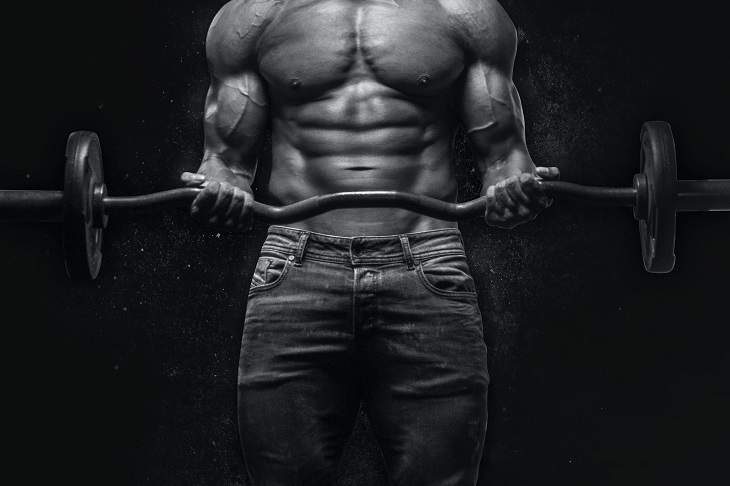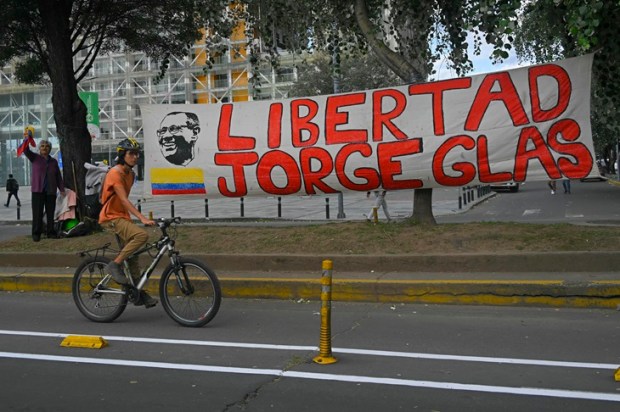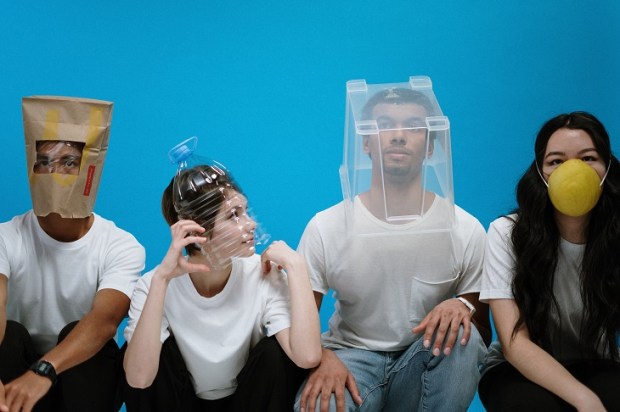The importance of the presumption of innocence was highlighted last week. Virginia Giuffre, who alleged she was trafficked by Jeffrey Epstein to multiple men when she was a minor, has dropped a defamation proceeding against high-profile lawyer Alan Dershowitz. After initially identifying Dershowitz as one of many men Epstein forced her to have sex with, Giuffre has now admitted she ‘may have made a mistake’.
‘I have long believed that I was trafficked by Jeffrey Epstein to Alan Dershowitz. However, I was very young at the time, it was a very stressful and traumatic environment, and Mr. Dershowitz has from the beginning consistently denied these allegations,’ her statement read.
‘I now recognise I may have made a mistake in identifying Mr. Dershowitz.’
While Alan Dershowitz has acknowledged Virginia Giuffre was young and in a traumatic, vulnerable position at the time, her 2014 accusation trashed his reputation, perhaps irreparably. No room was made for the possibility that Dershowitz was, in fact, telling the truth when he denied having sex with Giuffre.
This disregard for the presumption of innocence greatly accelerated in the wake of the #metoo movement. Too often over the past five years we have seen feminist ideologues clutch at cases like Alan Dershowitz’s in an attempt to demonstrate that affluent, university-educated, Western women are actually living in an oppressive patriarchy, in which men are never held accountable for their bad behaviour. But in an interesting cultural double standard, it’s often the other way around.
Men are publicly browbeaten by feminists into collectively atoning for the bad behaviour of every man who has ever done anything wrong, ever… This includes comparatively minor indiscretions, such as (to use feminists’ own terminology) creating ‘hostile working environments’ for women. However, there is no public campaign to have women atone for the toxic elements of their own behaviour; such as the workplace bullying of women by (shock horror) other women.
Rather than being admonished for their ‘queen bee’ syndrome, women’s bad behaviour towards women at work is often blamed on (you guessed it) men. After all, if men didn’t create such a hostile working environment, women wouldn’t feel like they’re competing with each other for limited spaces at the top, right?
Regardless of their circumstances, men are treated as oppressors-in-waiting. This denigration begins, in some cases, when they’re little boys; the most obvious example being Victoria’s ‘Respectful Relationships’ program. This program is taught from the early grades, and allegedly seeks to prevent domestic abuse. However, it merely posits the vague notion of ‘gender inequality’ as the root cause of family and domestic violence (FDV).
Such an approach is inaccurate, and ideologically motivated, as among other things, it ignores the fact a reasonable chunk of FDV victims are not women. According to the Australian Bureau of Statistics (ABS), 42 per cent of victims of FDV-related homicide in 2021 were male. It also contradicts a 2019 study from the Australian Institute of Criminology, which found the great predictors for domestic violence are alcohol abuse and low socioeconomic status. The AIC study also found a tiny minority of men were responsible for a hugely disproportionate amount of domestic abuse.
Regardless of these inconvenient truths, schoolboys in Victoria are still being forced to apologise for their gender in the classroom, in some cases quite literally. An assembly at Brauer College on ‘rape culture’ last year, in which boys were forced to stand up and apologise to girls for the ‘behaviours of their gender’, is a case in point.
This double standard in the discussion of FDV is not solely caused by the toxic feminist-victim cultural narrative. Society just cares less about men than it does about women. Take, for example, the relentless reminders that a large majority of victims of intimate partner violence (IPV) related homicide are women. According to the latest National Homicide Monitoring Program from the AIC, 80 per cent of IPV homicide victims in 2019-2020 were women.
This ghastly fact is wielded by everyone from feminist chieftains to Prime Minister Anthony Albanese; as a way of promoting the ten days of domestic violence leave his government has written into law, he tweeted on November 2, ‘Right now, one woman dies every 10 days at the hands of an intimate partner.’
However, for all this anti-violence talk, we never hear it mentioned that in 2020, 67 per cent of the nation’s total victims of homicide and related offences were men, according to the ABS. This increased to 70 per cent in 2021. As such, while feminists insist that IPV-related homicide is a ‘gendered’ problem for women, they turn a blind eye to the fact that by their own logic, homicide at large is a gendered problem that disproportionately affects men.
This is not a new phenomenon. According to the ABS, men have been the primary victims of homicide and related offences in Australia since at least the 1990s. They are also the primary victims of armed and unarmed robbery. And while much is made by political and cultural leaders of the fact that according to the most recent Personal Safety Survey, women are more likely to be violently attacked in their homes, and by somebody they know, they do not display the same frantic concern for men, who are much more likely than women to be attacked in public by a stranger. An issue that should also be considered gendered, if feminist logic were applied.
In my experience, when these cultural double standards are pointed out, feminist activists justify men’s suffering by highlighting that in most violent incidents against men, the perpetrator is also a man. Former Labor MP Terri Butler epitomised this mentality on an episode of the ABC’s QandA in 2019.
‘Women are more likely to be the victims of violence at home, men are more likely to be the victims of violence in public, but the common factor is it’s men committing the violence by and large … so these rigid ideas of masculinity hurt everyone,’ she stated.
The implication here is, (as I see it): ‘If men would just collectively atone for the sin of toxic masculinity, then maybe they wouldn’t be violently attacked!’
Apparently, in yet another glaring cultural double standard, victim blaming is okay – if the victim is a man.
Such double standards extend to many layers of men’s experiences. For example, according to the 2019 National Drug Strategy Household Survey (NDSHS), men are more likely than women to drink at risky levels (one in four men versus one in ten women). They also use illicit drugs like cannabis, methamphetamine, and cocaine at higher rates than women.
Despite the fact men are more likely than women to consume harmful substances, there is no campaign to label substance abuse a gendered issue. If it were women sniffing coke and smoking joints at disproportionately high rates (pardon the pun), we’d never hear the end of it from feminists.
Another glaring cultural double standard is public discussion of homelessness. According to the most recent 2016 census data, 58 per cent of Australia’s homeless population are men. This number is consistent with census data from previous years. However, public commentary mentioning homelessness and gender focuses on the recent phenomenon that women over 55 are the fastest growing group of homeless people. Not the fact that men are, and have been for some time, the majority of the homeless.
Then, of course, there are the everyday double standards; like the seemingly endless public initiatives to advance the welfare of women and girls, with meagre attention given to initiatives to support men and boys. For example, International Women’s Day and International Day of the Girl are recognised by the United Nations, and officially celebrated internationally.
However, International Men’s Day, which is coming up this weekend on November 19, receives a comparatively minuscule amount of public recognition. To add insult to injury, not only does the UN not recognise International Men’s Day, it officially recognises November 19 as World Toilet Day.
Consider also the relentless push to get more women into male-dominated industries like STEM, with a mind to somehow improving these industries with added estrogen. However, there is no public effort to push more men into female-dominated industries like teaching. This is a shame; given boys have been holding up TikTok celebrity and faux-masculine caricature Andrew Tate as an example of positive manhood, a few more male role models in the classroom would likely do boys a world of good.
The cherry on top of these double standards is that thanks to affirmative action, discrimination in the workplace against men on the basis of gender is culturally accepted, promoted, and celebrated, rather than rejected and reviled.
Despite the feminist claptrap, it’s clear society at large does not intrinsically care about men’s wellbeing. Fortunately, there are certain organisations that do, and I am fortunate enough to be a board member of one such organisation; Men’s Legal Service. Men’s Legal Service was established in 2016 upon observing the limited assistance available to men going through family law events.
Considering many men lack the financial resources to navigate the family law system, and as a result can lose contact with their children, the service MLS provides is invaluable in redressing this double standard. As a not-for-profit law firm, the focus of MLS is to ensure fathers remain part of their children’s lives after separation and divorce; another invaluable initiative, given how the role of fathers has been culturally devalued over the past few decades.
There will always be ideologues who point to the comparatively small number of very powerful men as apparent evidence that all men are inherently privileged. However, the experiences of a tiny percentage of a group does not reflect the experience of the group as a whole. Before our political and cultural leaders rush into casting society’s perceived villains, they would do well to consider all the facts, not just some.
Got something to add? Join the discussion and comment below.
Get 10 issues for just $10
Subscribe to The Spectator Australia today for the next 10 magazine issues, plus full online access, for just $10.


























Comments
Don't miss out
Join the conversation with other Spectator Australia readers. Subscribe to leave a comment.
SUBSCRIBEAlready a subscriber? Log in